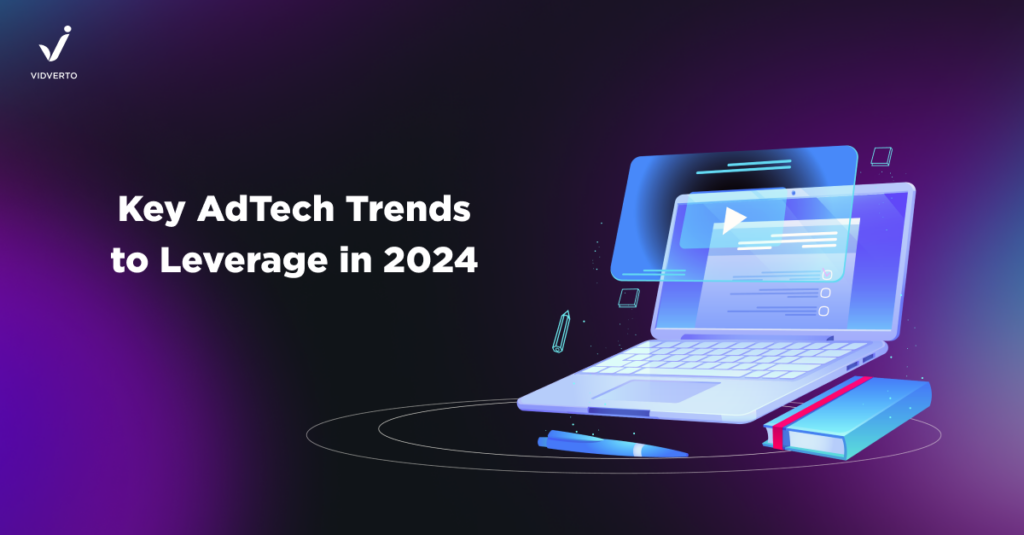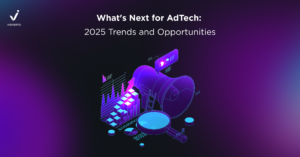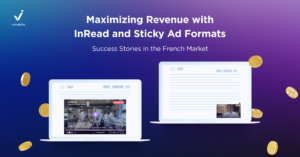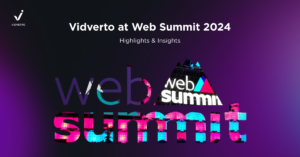The digital landscape underwent a transformation in 2023 following Google’s announcement to phase out third-party cookies in Chrome. This shift continues to mold the digital world as we step into 2024. In this article, we aim to shed light on crucial trends in advertising technology (AdTech) that provide insights into the industry’s future direction.
As an advanced video content and monetization platform that provides enterprise-level programmatic advertising solutions, our team at Vidverto realizes how valuable AdTech solutions are in leveraging the capabilities to reach a new digital landscape.
In this article, we aim to share what we see as the key AdTech trends for 2024. By the end, you’ll gain a comprehensive understanding of the digital landscape and discover practical ways to leverage these trends for the growth of your business.
Let’s dive in!
#1 Privacy-Friendly Targeting and Attribution
Google’s decision to phase out third-party cookies in Chrome means first-party data will take center stage. It makes advertisers apply other strategies:
1. Building trust: Offering users straightforward options for data sharing creates a trustworthy digital environment. To enhance a website’s credibility, publishers need to implement precise opt-in methods and provide comprehensive privacy policies. These elements act as navigational tools, offering a clear understanding of how users` data will be collected, utilized, and safeguarded.
2. Data enrichment: Understanding the fragmented nature of first-party data is vital in creating detailed user profiles. It involves using tools to collect and analyze data like CRM, loyalty programs, and website interactions. This collaboration enables a complete understanding of user preferences and behaviors, leading to more efficient and personalized digital strategies.
3. Contextual relevance: Creating engaging user experiences relies on a profound grasp of user behavior within the context of website content and interactions. Aligning digital strategies with the context allows brands to provide timely, relevant, and captive ads.
These strategies drive the industry towards more transparent and user-centric advertising, fostering a more trustworthy relationship between advertisers, publishers, and the intended audience.
#2 Uncovering Hidden Customer Insights with AI Technologies
The evolving digital landscape combines Artificial Intelligence (AI) and Natural Language Processing (NLP), bringing forth a powerful toolset. These innovations enable a comprehensive webpage content analysis, covering text, images, and videos, unlocking nuanced meanings and contextual insights. The result is precise targeting and user experience tailored to individual preferences.
AI’s prowess extends to dynamic campaigns, where it learns and adapts based on real-time user interactions. This capability optimizes campaign settings on-the-fly, ensuring efficient ad delivery and maximizing return on investment (ROI).
Furthermore, strategic AI usage in content optimization empowers publishers. By filling content with relevant metadata, AI helps advertisers to identify and connect with their target audience more accurately.
#3 Bridging the Gap with Privacy-Preserving Identity Solutions
These solutions offer advertisers the collection of important insights as well as accurate and user-centric tracking:
- Addressing the Cookieless Issue: The absence of third-party cookies presents a unique challenge – balancing effective targeting and tracking while safeguarding user privacy. Privacy-preserving identity solutions, like contextual signals, are suspended to bridge this gap.
- Unlocking Insights through Aggregated Data: By tapping into aggregated data points like weather, location, and trending topics, advertisers can gather significant information without delving into individual user identities.
- Federated Learning for Collaborative Intelligence: Embracing machine-learning techniques, such as federated learning, empowers multiple entities to refine their models using unique datasets without sharing raw data. This collaborative approach results in a harmonious collective learning dynamic without compromising the privacy of individual datasets.
- Consent-Driven Identity Solutions: The landscape of identity solutions is shifting towards consent-driven approaches. Utilizing blockchain-based solutions or decentralized identifiers grants users control over sharing their identity information. This empowers trust in the digital ecosystem by placing consent and transparency at the forefront.
#4 Cookieless World and Revival of Contextual Advertising
The shift away from cookies doesn’t mean the end of effective advertising. Once considered outdated, contextual advertising will become a powerful strategy to connect with their target audience. It involves placing ads based on webpage content rather than tracking user behavior.
This revival not only addresses privacy concerns but also opens new opportunities for creativity in ad placement. Advertisers are predicted to create creatives that resonate with the context, boosting user engagement.
#5 CTV, Video Ads, and Digital Audio as Ad Spend Drivers
While programmatic buying remains the dominant force, expect 2024 to be the year of video and audio ad prominence. Connected TV (CTV), video ads, and digital audio will be the driving forces behind ad spending.
Consumers increasingly turn to streaming services for entertainment, leading to a surge in CTV consumption. Advertisers are capitalizing on this trend by investing in CTV advertising to reach audiences who have cut the cord on traditional TV.
Simultaneously, the popularity of video ads continues to rise, with the share of programmatically purchased video traffic expected to boom. The visual attractiveness and narrative potential of video make it a powerful medium for advertisers striving to monetize their campaigns.
Digital audio, including podcasts and music streaming platforms, is becoming a crucial player in the digital landscape. Advertisers recognize the potential of reaching intended audiences through targeted audio content, adding a new dimension to their strategies.
#6 White Label Technologies for Building AdTech Products
White-label technologies, offering customizable solutions under a brand’s name, may rise in prominence.
These technologies offer the blank canvas to develop and brand solutions without starting from scratch. Furthermore, advertisers can leverage these platforms to build their proprietary ad technology stacks tailored to their specific needs and audiences. This empowers brands to take control of their data, personalize the user experience, and stand out in a competitive market.
White-label solutions enable advertisers to stay agile in a rapidly changing landscape, allowing them to adapt to emerging trends seamlessly. As competition strengthens, the ability to deliver customized, white-labeled AdTech products gives brands a strategic edge in delivering unique and effective solutions.
What comes next for you?
Simply making a good ad and hoping for the best is a thing of the past. The digital advertising landscape is changing fast. Now, you need to consider more factors, and experts can guide you to better results. Reach out to Vidverto for assistance in navigating this dynamic era.
As we enter 2024, the industry is witnessing a significant change towards privacy-conscious practices, contextual advertising, and a renaissance in video and audio formats. The cookieless world is reshaping the approach to targeting, while white-label technologies provide the flexibility needed to stay ahead in the market.
We, at Vidverto, understand the nuances of these changes and are well-equipped to help you align your advertising strategies tailored to the shifting dynamics of the industry.




 Back to all news
Back to all news Read Full Article
Read Full Article Go to top
Go to top



